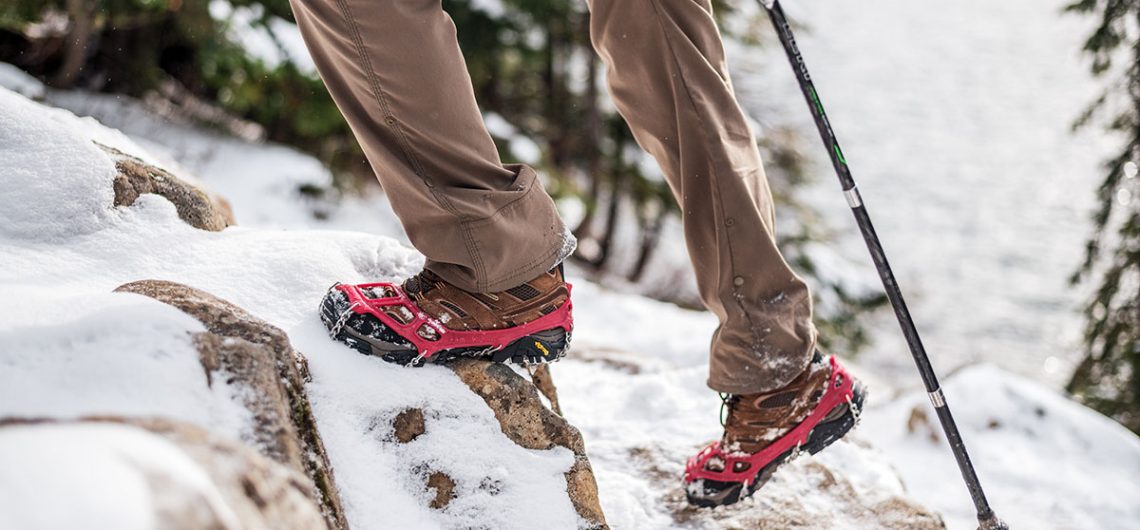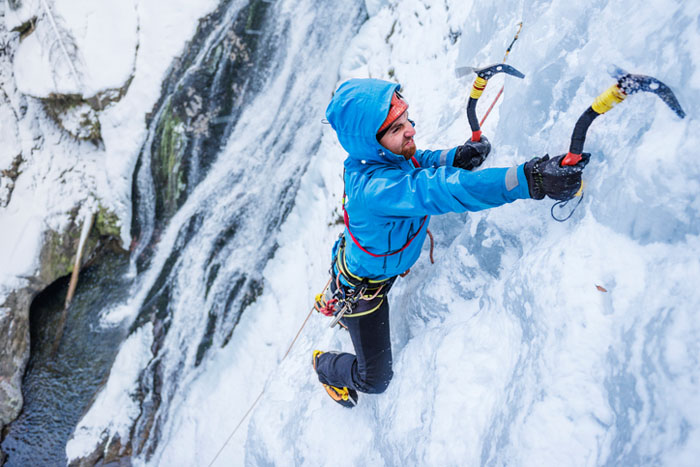The purpose of this guide is to help travellers thinking of climbing Kilimanjaro to select what kind of traction device will work best for them. I will outline all of the factors to consider when making a decision, and it will be immediately clear from reading this what is the best choice for you. I have used the term “crampons” as a generic name for any kind of spikes that you attach to your boots, and consider microspikes to be a lighter duty version of these. For those looking for in-depth detail of how each device works on different angles of ice and snow, we will incorporate angle-specific scenarios to better display which item works best. It is obviously overkill to use an ice axe and full crampons to walk up a gently angled path of compressed snow. Finally, we will compare how each device performs on the same day up Mount Kenya and Rwenzori in Uganda in order to give a fair comparison. The goal is not to prevent anyone from attempting to climb the mountain but to help make each climber more informed about the benefits of each device. Snow and ice conditions can vary year to year on the mountain, and it is quite common to trek during a year when there is less snow and ice than normal. At the least, the information contained here will be beneficial to anyone who wants to make the best decision when purchasing either crampons or microspikes.
Overview of Crampons and Microspikes
Microspikes have 1 fundamental difference to crampons in that they do not have a platform. The design being essentially a rubber harness into which the user places his footwear. It is shoe-like, featuring steel chains and small 1cm long spikes. Most consider microspikes to be a compromise between crampons and winter traction devices which do not provide as much grip. They are generally less expensive, less technical, and lighter. The benefit of the latter being at a premium to those who are using them for moderate winter hikes and not in more serious alpine environments. This review of crampons and microspike design should indicate that the choice between crampons and microspikes, if considering functionality, should be made primarily on the type of terrain and its severity.
The function of the crampon is simple: to grip the surface of ice, snow, and mixed terrain. The components of a crampon are the ‘spikes’ which are either horizontal, vertical, or diagonal and ‘platform’. The most basic crampon is a ten-point design which has 2 horizontal and 8 vertical points. This is a good all-round design for general snow and ice. If the emphasis is more for vertical ice climbing, then crampons with 12 or 14 points would be better, and for mixed terrain, crampons which have more aggressive horizontal points as well as a more aggressive angle to the points.
Whether you need crampons, ice axes, and microspikes to climb Mount Kenya and Rwenzori largely depends on the specific route and time of year you plan to climb.
For Mount Kenya:
- Crampons, ice axes, and microspikes may not be necessary for all routes, especially during the dry seasons (January to March and June to October) when the routes are relatively free of snow and ice.
- However, during the rainy seasons (April to May and November to December) and particularly on higher elevations, there may be ice and snow present, requiring the use of crampons and ice axes for safety.
- It’s essential to check the current conditions and weather forecast before embarking on your climb and consult with experienced guides who can advise you on the necessary equipment.
For Rwenzori Mountains:
- Crampons, ice axes, and microspikes are typically required for climbing Rwenzori Mountains, as the higher elevations can experience significant ice and snow throughout the year.
- The Rwenzori Mountains, also known as the “Mountains of the Moon,” are known for their glaciers and permanent snow, making crampons and ice axes essential tools for navigating the terrain safely.
- Additionally, the weather in the Rwenzori Mountains can be unpredictable, with sudden changes and the potential for snowfall even during the dry seasons.
- Climbers should be adequately prepared with the necessary equipment and clothing for mountaineering in potentially harsh conditions.
In both cases, climbers should always prioritize safety and be prepared for varying weather conditions and terrain challenges. It’s advisable to seek guidance from experienced climbers or local authorities to determine the specific equipment needed for your planned route and time of ascent.
Ol Doinyo Lengai:
- Ol Doinyo Lengai, located in Tanzania, is an active volcano known for its unique trekking experience.
- The ascent to Ol Doinyo Lengai does not typically involve traversing icy or snowy terrain where crampons or microspikes would be required.
- The climb up Ol Doinyo Lengai is more about navigating rugged volcanic terrain, including loose scree and ash slopes.
- Sturdy hiking boots with good traction are sufficient for tackling the terrain encountered on the trek up Ol Doinyo Lengai.
Mount Meru:
- Mount Meru, also in Tanzania, is the second-highest mountain in the country and offers a challenging trekking experience.
- While Mount Meru does not usually have extensive snow and ice like nearby Kilimanjaro, there may be some sections with icy patches, especially at higher elevations.
- However, crampons and microspikes are generally not required for the standard trekking routes on Mount Meru.
- Proper hiking boots with sturdy soles and good traction should be adequate for navigating any icy sections encountered during the trek.
- It’s essential to check the current conditions and weather forecast before embarking on your trek and consult with experienced guides who can provide advice on the necessary equipment.
In summary, for both Ol Doinyo Lengai and Mount Meru treks, crampons and microspikes are typically not needed. However, it’s essential to come prepared with appropriate hiking boots and other gear suited for the specific terrain and conditions encountered during the treks.
![]()



Comments